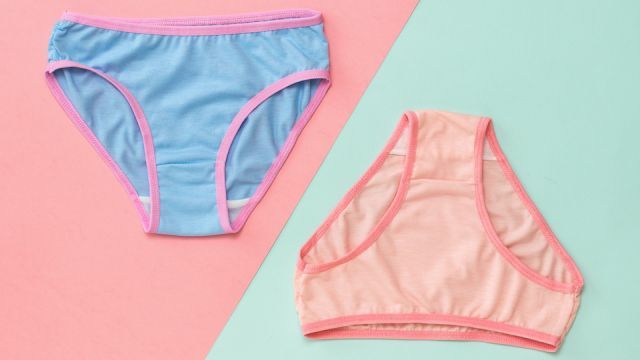
Your vagina is a complex and finely tuned environment that has several factors that need to be kept in balance. Your vagina is pretty good at protecting and cleaning itself. Proper vaginal care, such as good hygiene, safe sex, and regular gynecological visits, all play a role in keeping your pH in check. But what about food? What you put in your mouth has an effect down south, and what you eat could make or break the health of your vagina.
These common vaginal issues could be helped by food
Several common vaginal health concerns may be related to the food you eat.
The pH of your vagina
A normal vaginal pH level is between 3.8 and 4.5, which is moderately acidic. Why does vaginal pH matter? An acidic vaginal environment is protective, creating a barrier that prevents unhealthy bacteria and yeast from multiplying too quickly and causing infection.
Your vaginal bacteria
The vagina has its own microbiome, which plays an important role in your health. A healthy bacterial environment down there can help prevent conditions such as sexually transmitted infections (STIs), yeast infections, urinary tract infections, and bacterial vaginosis. Your vagina, like your gut, requires healthy bacteria to maintain its normal acid/alkaline balance and fight infection. Foods that are good for your gut are generally good for the vagina.
Vaginal lubrication
The vagina naturally produces lubrication that helps facilitate sexual activity. This lubrication reduces friction in the vagina, increasing comfort during sex, and minimizing any feelings of soreness or irritation. However, vaginal dryness is a very common sexual issue. It’s common to resort to artificial lubricants to reduce vaginal dryness, but some foods may help boost lubrication naturally.
The smell of your vagina
Your vagina should cleanse itself naturally, but if you notice a stark difference in your odor, then there could be something abnormal going on. Strong odors, itching and irritation, and unusual discharge are all signs of a problem, some of which could potentially be rectified by adjusting your diet.
Certain foods can help keep your vaginal environment balanced and prevent dryness, infections, and unhealthy odors. That’s why we’ve rounded up the best foods with key ingredients to keep things feeling healthy down south.
Eat these foods for a healthy vagina
Try adding these foods to your shopping cart to keep your lady parts happy and healthy.
Yogurt
In addition to helping you reach your daily quota of calcium and vitamin D, yogurt is a plentiful source of beneficial bacteria that is healthy for the vagina. Varieties that contain a bacteria called Lactobacillus acidophilus may help keep the pH of the vagina in the acidic range, driving down the risk of yeast and other types of infection.
Nuts and seeds
Eating a healthy diet rich in fatty acids may aid in producing additional vaginal lubrication. Raw pumpkin seeds, sesame seeds, sunflower seeds, and fish (especially salmon, mackerel, and tuna) are great choices that are high in fatty acids.
Ginger tea
A study published in the Journal of Alternative and Complementary Medicine found that ginger was just as effective as ibuprofen for relieving painful period-related cramps. Ginger is well-known for its anti-inflammatory properties, so it may work to quell cramps similar to common drugs.
Though the study focused on ginger capsules, it can’t hurt to try adding fresh ginger to your diet. Whip up a cup of ginger tea by adding two tablespoons of fresh ginger root to water and letting it steep for 15 minutes before straining.
Sweet potatoes
Sweet potatoes are rich in beta carotene and vitamin A, which can help strengthen and protect uterine walls. These nutrients have been shown to have direct effects on fertility and reproduction in both men and women, as well as support healthy fetal development.
Garlic
Garlic contains a compound called allicin, which is known to be antimicrobial. Garlic has been shown to have positive effects on immunity and heart health, as well as other health conditions. It’s also known to slow the growth of the Candida fungus that causes yeast infections. While you should never insert garlic into your vagina, eating more of the potent herb can help maintain vaginal balance.
Cranberries
Cranberries are full of antioxidants and acidic compounds, which are powerful infection fighters that can help keep bacteria from adhering to the bladder wall. A study in the American Journal of Obstetrics & Gynecology found that women who took a cranberry juice pill equivalent to two 8-ounce servings of cranberry juice for six weeks after gynecological surgery reduced the rate of UTI occurrence by half. Just make sure you stay away from the sugar-loaded cranberry juice varieties, which can actually make things worse down there.
Dark chocolate
Chocolate with greater than 70 percent cacao content is high in beneficial antioxidant compounds called flavonoids. Chocolate also contains methylxanthines, which are believed to boost libido. Women who eat at least a square of dark chocolate daily report increased desire and better overall sexual function.
Your vagina hates these foods
While some foods can help your lady garden, there are many that can upset its balance. For a healthy vagina, stay away from these foods:
White Bread
Eating foods high in refined carbohydrates, including white bread and white rice, can put you at risk for bacterial vaginosis or yeast infections. These foods raise your blood sugar, which creates a prime environment for harmful bacteria to thrive.
Sugar
Similarly, eating foods high in sugar can change the pH of your vagina, allowing for an overgrowth of yeast and other infection-causing organisms.
Alcohol
Alcohol may worsen menstrual cramps, and studies have linked even a limited intake of alcohol to increased breast cancer risk.
Overall, aim to eat a balanced diet with plenty of fruits, vegetables, nuts, seeds, and lean proteins. A balanced diet makes for a healthy body, and that includes your vagina.
-Liivi Hess

